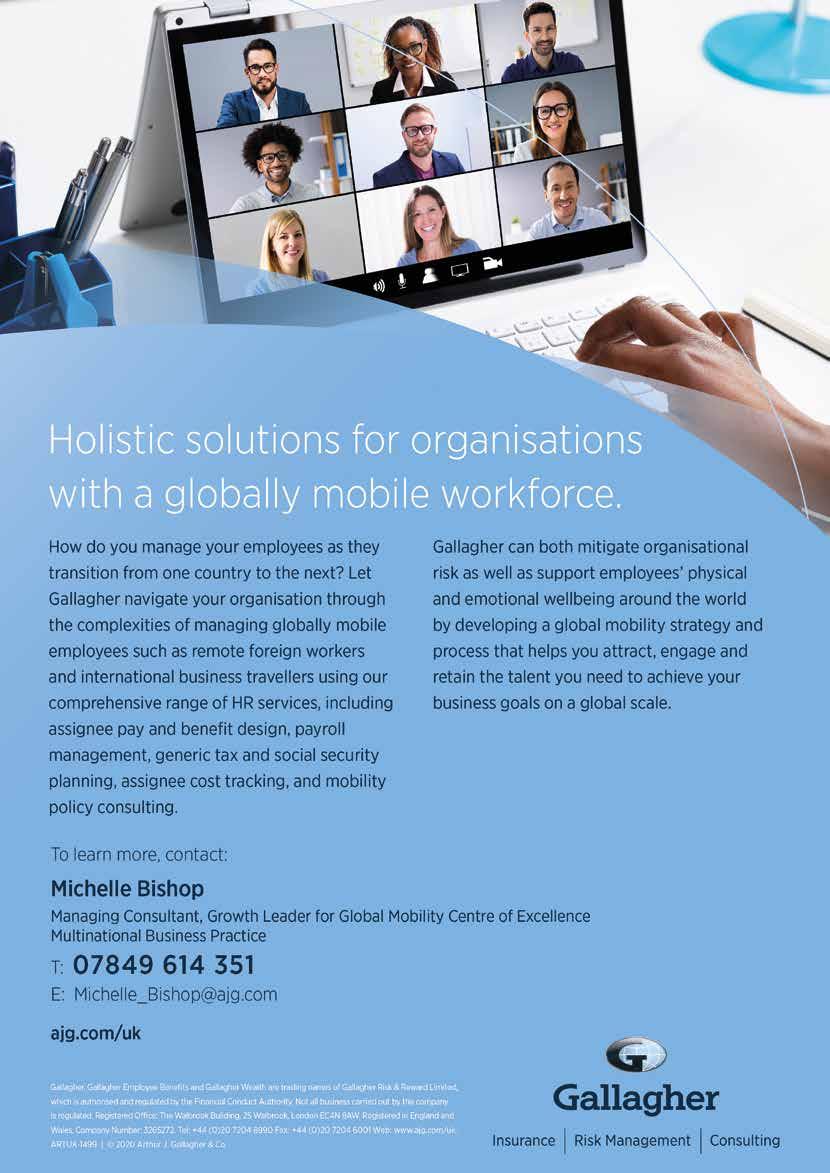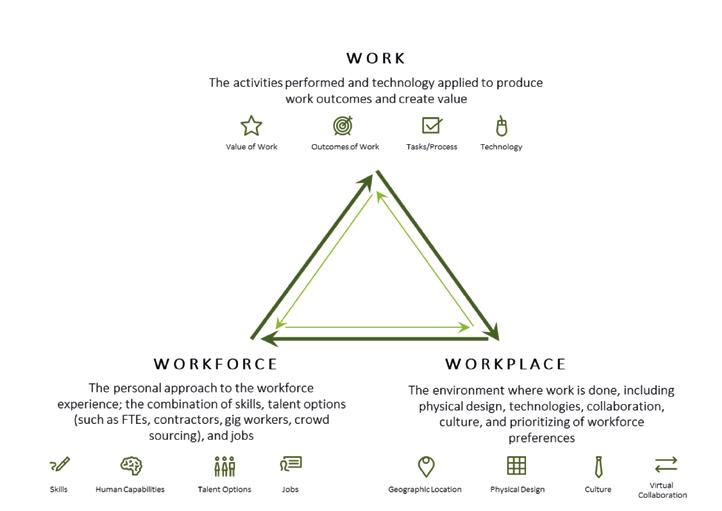
8 minute read
Business Transformation Through People Engagement, Innovation And Performance
I often start my speeches with a seemingly simple question to the audience: ‘How many of you know exactly how many employees you have as of today? Please raise your hand’. Surprisingly, on average, only about 35-40 per cent raise their hands. I then ask those who have their hands up to keep them up for the follow-on question: ‘How many of you know exactly how many employees you will need 18 months from now, and what type of skills they will require?’. Almost all the hands go down, followed by some nervous laughter.
Add to this that most organisations struggle to know exactly where their workforces are deployed around the country (or the world) on a given day, and you have a formula for, at minimum, confusion and at worst, dysfunction. Fact is, most leaders in organisations do not have a basic grasp of the make-up of their workforces, both now and in the near future.
From the workforce’s perspective, things are equally as challenging. Being forced, in many cases, to work from home trying to get stuff done while living at the centre of a maelstrom of data and technological change, it’s no wonder that people productivity has been declining in most regions, for years. With all the “amazing” technology that we have, one would think we must be significantly more productive than we were, say, 20 years ago. Unfortunately, this is not the case. It is true, studies show that technology and gadgets have made us more productive at home, but when we get to work, it’s like 1997 all over again. We sit at a desk with a PC, a mouse and most of us still use Windows as our interface to the organisation. Additionally, most organisations are constantly throwing new systems and processes at the workforce, with very little training or explanation of what they are supposed to do with the latest system. So, it’s no wonder that most economists are finding that increases in human productivity levelled off around 2004, and are now heading downward.
There comes a time when you ought to start doing what you want. Take a job that you love. You will jump out of bed in the morning. I think you are out of your mind if you keep taking jobs that you don't like because you think it will look good on your resume. Isn't that a little like saving up sex for your old age?
- WARREN BUFFET
This story of work in 2020, is illustrative of where we are today, yet few would argue against the fact that this is a fundamental aspect of running a business effectively. In fact, many would argue that as a result, they feel like pilots at the helm of an aircraft, in a fog, with faulty navigation systems, with passengers (employees), hanging on for the white-knuckle journey. An extremely uncomfortable position to be in while the turbulent winds of an unprecedented global health and economic crisis buffet us around.
So, this begs the question: what would the world of work be like if we could turn technology and technological change to our advantage and use it to match the perfect person to the perfect job in the perfect location? A job that gives purpose, the opportunity to master new things, and the opportunity to be left to get on with that work, without too much interference by others? What if we change the mindset (and processes) to think differently about bringing in new talent and deploying it at the right time, right place, right skills, right motivations.
Most would say, this is impossible in today’s workplace – the tools we have are very one dimensional, and are not set up to think and do, differently. Add to this, today’s economic realities in a crisis, where there is a complete focus on quarterly results, profits, cutting costs, growing the top line, saving the taxpayer money (in Public Sector) etc., override many people’s desires and motivations; just get on with the work! Produce more with less, meet objectives, meet the deadline, and at all costs, deliver! Most of us get caught up in these whirlwinds and we put heads down and plod through, quarter after quarter, a treadmill.
But does the world of work have to be this way? Is there a different way to do things, a different way to look at things?
There is a certain truth to what Warren Buffet says here, however, when one must worry about a mortgage, school fees, a car payment or a student loan to pay back, the mind becomes focused on this at the expense of aspiration and desire. The real reason that so many of today’s workforce ends up in a rut, is far more complex than just pulling up your boot straps and going out to find that perfect job. In fact, many of the reasons people fall into uninspiring work are outside of their control.
If you think about the current state of the world of work, the method by which people find careers and careers find people is largely unchanged since the beginning of the Industrial Revolution. True, today we have LinkedIN and some digital job posting boards, but largely the process is the same as it has always been: employer posts job, prospective employee finds posting (mainly online, these days) and applies. From there, the process of interview and assessment, selecting candidates and getting them onboarded, is also largely unchanged. It’s a very twodimensional world controlled by supply and demand, navigated with a bit of luck (for both employee and employer). Highly inefficient, time consuming, and rarely gets the right person, with the right skills, with the right motivations in the right job at the right time. Throw in the whims of the normal business cycle: growing economy followed by shrinking economy, (supply and demand) and the complexities multiply. This traditional way of finding and deploying the workforce in constantly changing market conditions, I would argue, is the fundamental reason why so many people find themselves doing uninspiring work and feel trapped in it. Pull up your bootstraps and go find that job! Good luck with that.
The other challenge organisations deal with is getting the right people in the right place at the right time. Global mobility of the workforce is at an all time high. With barriers to moving talent around the globe falling in most regions, there is a great opportunity to turn a challenge into a major opportunity. If we can set aside a local focus on talent and expand it to regional, even global, the opportunity to increase engagement of the workforce, and subsequently, performance, is great. In the 21st century, more people are willing to move to new locations to find that perfect job. In my opinion, once we turn the corner on the Coronavirus Pandemic, the desire to move around to find that perfect role will be great. Are you ready to facilitate this in your organisation?
Everyone has been made for some particular work and the desire for that work has been put in every heart
- RUMI
So, how do we capture these opportunities? What if we created a workforce “marketplace” that not only balances supply and demand of resources, but also maps people’s skills, motivations, aspirations to the right job at the right time in the right place:
Maybe a simple “equation” can illustrate a way forward: People Engagement, Innovation and Performance (PEIP): • Right people + Right place + Right skills + Right time + Right motivation = PEIP
PEIP is a strategic capability that not only creates higher performance it creates a more engaged workplace. It is, first, a new mindset, second a set of new processes to support the organisation and lastly, underpinned by next generation HR Technology (for example, SAP SuccessFactors, or Workday, or similar). Who doesn’t want to work in an organisation that makes an effort to work with employees to optimise them, their skills and their career aspirations? A workplace that tries to align people to what they do best. An engaged workplace is a fun place to work, but it is also a competitive advantage. Some of the highest performing companies like Google, Microsoft, Accenture, IBM and SAP, have implemented PEIP strategies to create competitive advantage, and this is reflected in their people engagement scores as well as share price performance.
The chances that people “made for some particular work and the desire for that work”, find and succeed in that work, go up dramatically. The benefits for individuals, organisations, and society at large, would be tremendous. Imagine then, if we “turbo-charged” this equation with emerging “intelligent” technology; using AI and Machine Learning to further maximise the efficiencies of PEIP, individuals and organisations leveraging smart technology to find each other.
People doing jobs they love for organisations they love will be highly productive and great places to work. Lastly, also imagine that once in place, doing desired work, people could leverage smart technology to help them be even more productive and engaged. Robots working for us, and with us, to make work more fun and fulfilling. Sounds like science fiction, but it is not, the technology to make this happen is available today, and the time for this to happen is here and now. Additionally, demographic and other trends in the work environment are rapidly emerging alongside the latest technology trends and are creating a “perfect storm” of challenge, but also opportunity.
One where “everyone has been made for some particular work and the desire for that work” can be realised.
TIM RINGO Tim Ringo is an author, speaker, board advisor and senior executive. His new book “Solving the Productivity Puzzle” is out now www.timringo.com.










